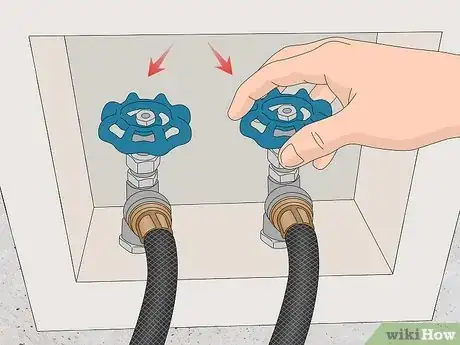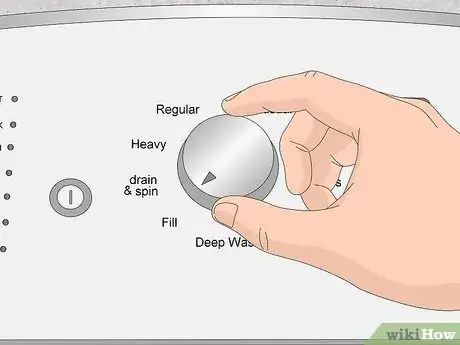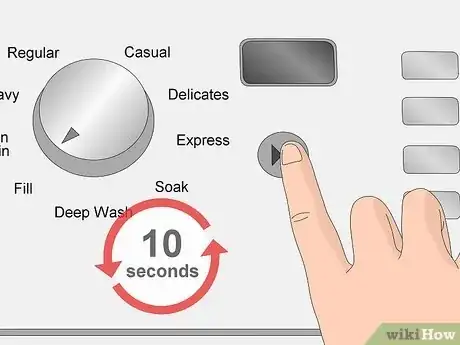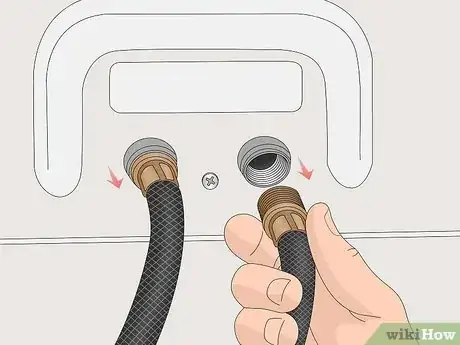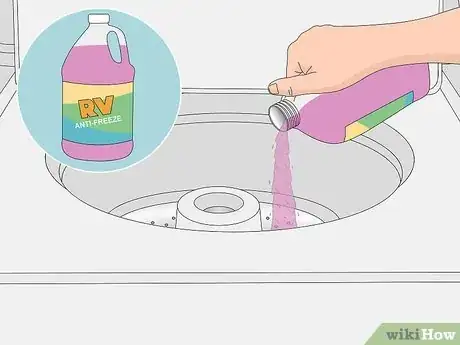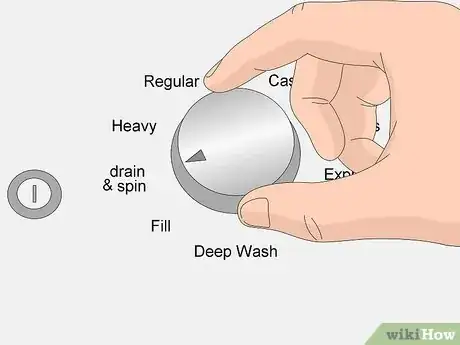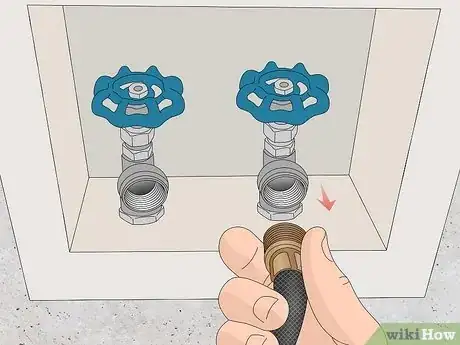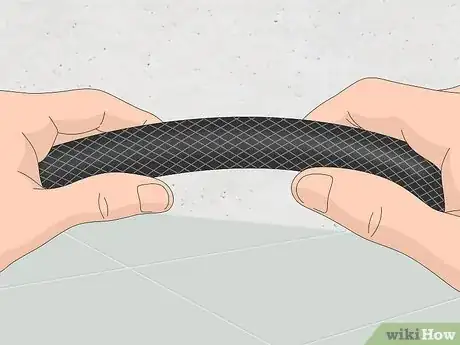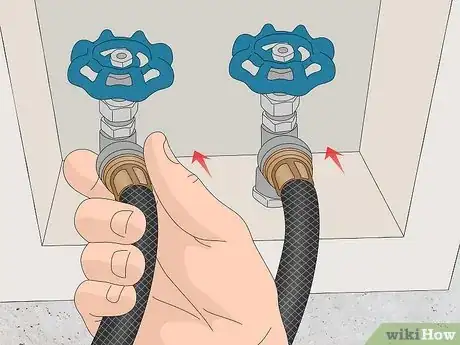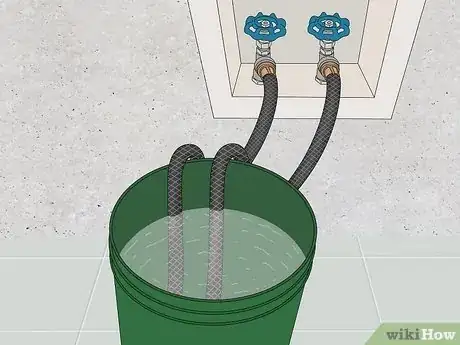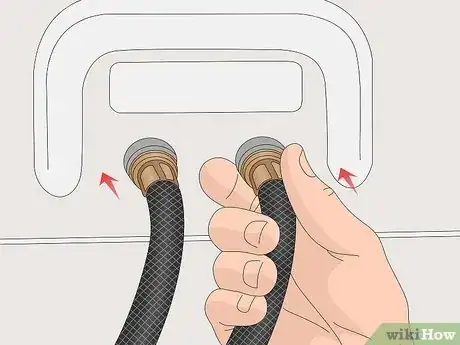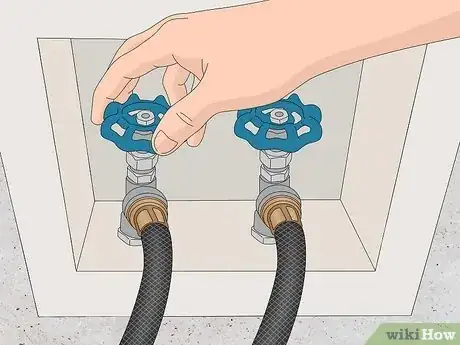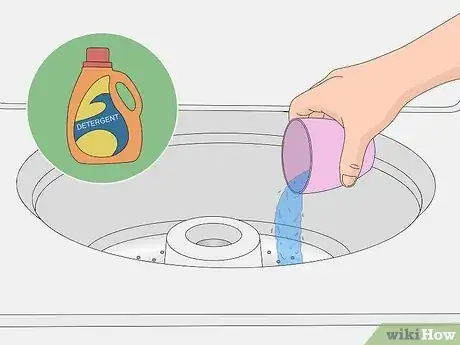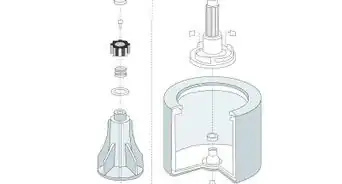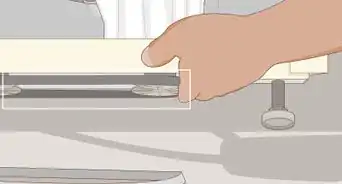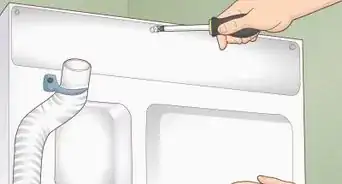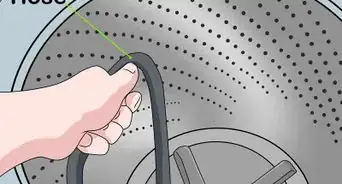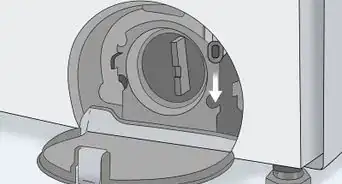wikiHow is a “wiki,” similar to Wikipedia, which means that many of our articles are co-written by multiple authors. To create this article, 10 people, some anonymous, worked to edit and improve it over time.
wikiHow marks an article as reader-approved once it receives enough positive feedback. In this case, several readers have written to tell us that this article was helpful to them, earning it our reader-approved status.
This article has been viewed 144,148 times.
Learn more...
Washers generally require a minimum of service, however winterizing can prolong the life of your appliance. This primarily applies if you keep your washer in an unheated part of the house-- the basement, bonus room or garage, for example.
Steps
-
1Shut off both water spigots.
-
2Turn the timer knob to "fill" and select warm wash, warm rinse.Advertisement
-
3Turn the machine on for ten seconds. This will run the water out of the inlet valve.
-
4Disconnect the hoses from the washer inlets.
-
5Pour a quart of pink RV antifreeze into the basket. This is a propylene glycol based antifreeze and is non-poisonous and often used in RVs (Recreational Vehicles).
-
6Set the washer for "drain and spin". Let it run for about 30 seconds. This mixes the antifreeze with the water that was left in the washer.
-
7Remove the hoses from the spigots and clean the inlet screens.
To use again
-
1Inspect the hoses for signs of dry rot. Bend the hoses and examine carefully for small cracks. If you suspect that the hoses might be deficient, replace them. Remember that water pressure will be on these hoses continually throughout the warm season. If one hose should fail, substantial water damage may result.
-
2Connect the hoses to the spigots.
-
3Flush the water pipes and hoses. Run a gallon or two of water through each hose and into a sink or bucket.
-
4Connect the hoses to the back of the washer. Make sure the hot water line goes to the hot inlet. (Both the spigot and the washer inlet should be labeled "H" or "keyed" red.)
-
5Turn on the water and check for leaks.
-
6Pour a cup of detergent into the washer basket and run a complete cycle with no clothes in the washer. Once the cycle is complete, the washer will be ready for the warm weather washing season.
Community Q&A
-
QuestionI did not winterize my washer for storage. What will go wrong?
 Community AnswerAny residual water that freezes will expand as it turns to ice and possibly crack plastic parts like the inlet valves or pump.
Community AnswerAny residual water that freezes will expand as it turns to ice and possibly crack plastic parts like the inlet valves or pump. -
QuestionMy washing machine was left out in the cold weather. I think the oil in the motor has frozen. What can be done about that? Also, can placing it in a heated area for 24 hours bring it back to use?
 Community AnswerThe oil won't be your problem. If there was residual water in the pump and it froze, your pump will be damaged. Bring it in, let it warm up, and watch for a leak coming from underneath as it goes through its cycles. If it doesn't leak, you lucked out. If it does, you'll have to weigh the cost of the repair vs. a different machine.
Community AnswerThe oil won't be your problem. If there was residual water in the pump and it froze, your pump will be damaged. Bring it in, let it warm up, and watch for a leak coming from underneath as it goes through its cycles. If it doesn't leak, you lucked out. If it does, you'll have to weigh the cost of the repair vs. a different machine. -
QuestionHow can I haul a used washing machine in the back of a truck in cold weather without damaging the pump?
 Community AnswerDrain water from the pump before taking it into the cold, or run polypropylene glycol through the water lines and pump.
Community AnswerDrain water from the pump before taking it into the cold, or run polypropylene glycol through the water lines and pump.
Warnings
- Only use propylene glycol! Any other antifreeze will not be so environmentally friendly.⧼thumbs_response⧽
